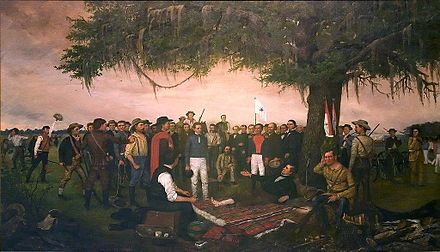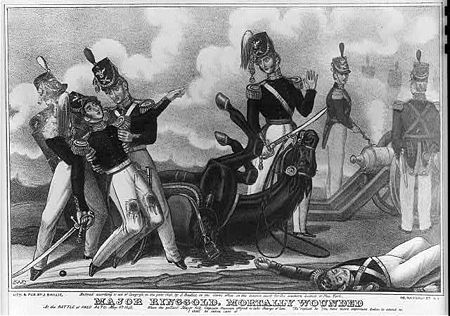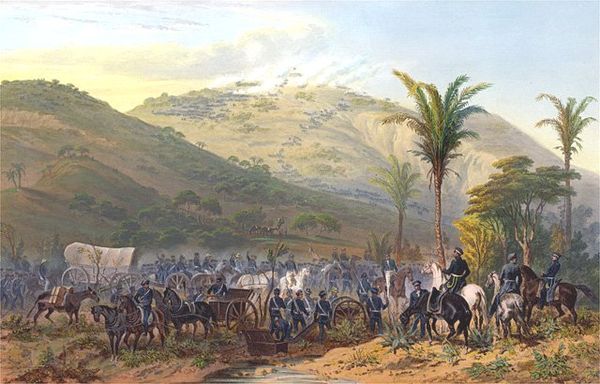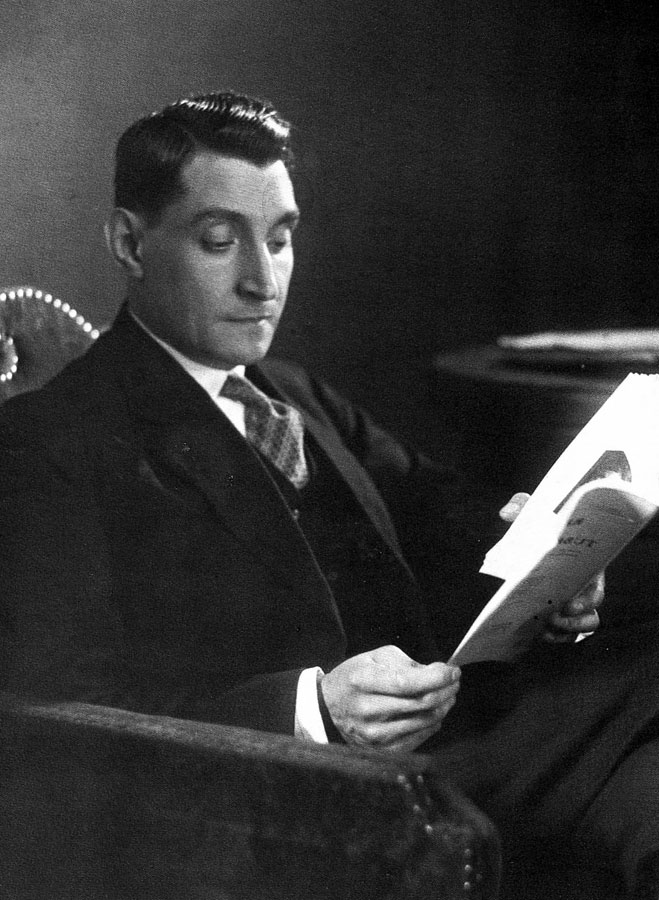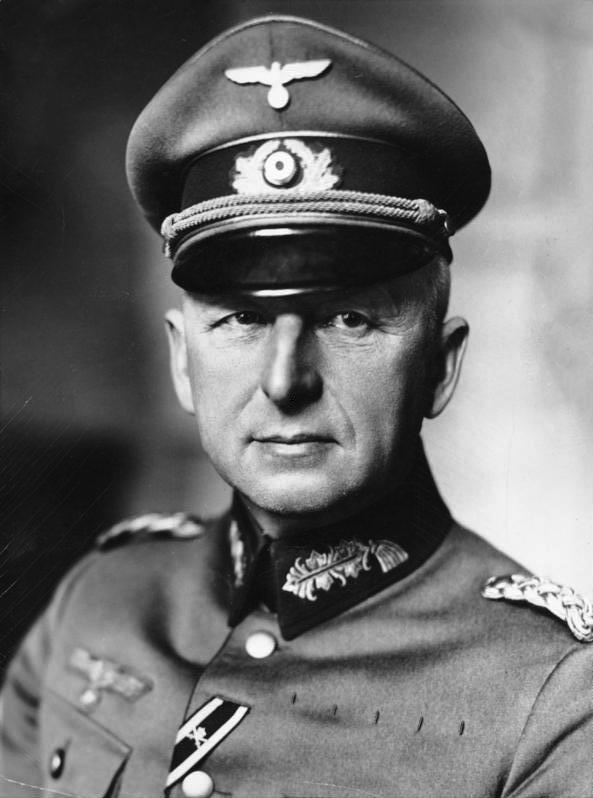Mexican-American War Lecture
Nov 23, 2016 2:30:47 GMT
saltin, Napoleon Bonaparte, and 3 more like this
Post by Stonewall Jackson on Nov 23, 2016 2:30:47 GMT
The Mexican-American war was a pivotal moment in the foundation of what we know today as the United States. The war marked the biggest land grab in the history of the country, gaining California, New Mexico, Arizona, and Utah. The war also resulted in the Mexican empire losing half of its territory. So how did this war come about? Well, to answer that question, we must travel back in time way before then to see that there was a long existing feud between Mexico and the United States decades before the war.
The Mexican-Texas Debacle
So to get started, one must realize how this feud between Mexico and the U.S came about. It all started when Mexico won its independence from the Spanish Empire in October of 1824. When the Mexicans finally managed to gain their freedom, like many countries in its infancy, they drafted and put together a governing body and a Constitution. Seeking ways to expand the new empire to have an economic surplus, the Mexican Government hired and sent Stephen F. Austin to assemble 300 American families to have them settled in the territory known as Texas. The "Old 300" (as the settlers were coined) settled at the Brazos, Colorado, and San Bernard Rivers. The Mexican government only wanted this small handful of families to kick start population growth and small cities, and did not want any more Americans coming into Texas. But that is exactly what Americans did, they came from a variety of states to seek opportunity in Texas. Enraging the Mexican government, they passed the Law of April 6th, 1830. This law, prohibiting American immigrants, angered the Texans. This, along with the rise of a totalitarian dictatorship led by Santa Anna in which a military occupation preceded over Texas and citizens were being imprisoned, led the Texans to revolt. Many infamous battles rose to provocation, including the infamous last stand at the Alamo, and the Massacre at Goliad. The Texas committee (governing body) selected Sam Houston to be the acting General of the revolution. Sam Houston implied early methods of a Scorched Earth Policy. Destroying cities on his retreat to east Texas where he and hundreds of Texans plus newly arrived Americans from the states made a stand at San Jacinto, where they captured Santa Anna (but later let him go) and declared their freedom. So you may be wondering, what is this so-called feud between Mexico and the U.S? Well, after the Revolution, Mexico refused an independent Texas. The Texas government requested statehood, which enraged Mexico. Sam Houston
Sam Houston  he battle of the Alamo
he battle of the Alamo
Texas Applies for Statehood
When Texas first applied for statehood under the Jackson administration, it was denied. There were many reasons for this, including the fact that Texas was a territory which had slavery, and if it was allotted to the union, it would throw an off-balance in the senate and number of free vs slave states. Many northerners feared that having Texas be admitted into the union would allow the southern states to become too powerful. Jackson didn't dislike the idea of an independent Texas, but he rejected its acceptance to the union based on the slavery issue and to "preserve the union". His predecessor, Martin Van Buren, also rejected the statehood of Texas. It wasn't until later that John Tyler, having his presidency come to a close, wanted to have a legacy en stowed upon himself. He offered the idea of a joint-resolution of Texas, which was passed by the senate. But Texas wasn't fully admitted to the union until President James K. Polk, in which he signed the legislation on December 29th, 1845. James K. Polk would be a leading figure in the soon to-be war that would follow the next year.
 James K Polk
James K Polk
James K Polk and the struggle for Manifest Destiny
What I am about to talk about in the coming headings will be the most important part in this lecture, and possibly all of American History. I will try to avoid political spectrum, but some stuff most be discussed in order to understand the cause for the Mexican-American war. James K Polk was under a lot of pressure when he entered the presidency. Not only dealing with a teetering Mexico, but also Nationalistic Americans who loathed the idea of Manifest Destiny in America. Polk had three goals in office, 1. Lower Tariffs, 2. Establish Independent Treasury, 3. Manifest Destiny. The only one that will be discussed will be Manifest Destiny (The other two are irrelevant and too political). In this era, Americans not only just acquired Texas, but they wanted Oregon and California too. This idea of Manifest Destiny, coined by John L. O'Sullivan, gave the idea that Americans had a destiny to spread across the North American continent. The one area focused on, the purchase of California for 25 million dollars. Polk fought vigorously to buy this land but Mexico, still being controlled by Santa Anna, refused. In fact, Mexico denied the purchase because they were still upset about their loss of Texas. Not only was Polk interested in California, but he was also trying to come to terms with Britain about the Oregon country. Americans had the idea of "All or nothing" when it came to Oregon (Important after the war regarding Mexican territory), they wanted the boundary line to be 54 40, commonly seen as "54 40 or Fight." Why am I talking about Oregon when this should be Mexico? I am trying to prove the point of the idea that Americans and the government had of Manifest Destiny, which is so crucial in understanding the War. Acquiring the Oregon country was another idea of Manifest Destiny. Americans were eager to expand, and president Polk would result to everything, even war, if Mexico still refused the purchase of California.
On the Eve of War
Having realized that Mexico was ultimately going to refuse the purchase of California, President Polk sent General Zachary Taylor down to the Rio Grande River with American troops to defend against a possible Mexican aggression. There was a problem here. Mexico regarded the boundary line of Texas to be the Nueces River, while America regarded the boundary to be the Rio Grande. Hopefully you see the problem here. The Mexicans, accepting the boundary to be the Nueces, figured that General Zachary Taylor approached upon their lands. The Mexicans stationed at the Rio Grande opened fire on the American forces. Many believe Polk knew this would happen so he could have a cause for war, but I won't discuss that here. Congress immediately approved for war and so the Mexican-American War began.
You can all go to Hell, i'm going to Mexico!
Yes, I replaced Texas with Mexico in that famous quote uttered by Davy Crockett. But the point here is that when war broke out, enlistment skyrocketed. The most fascinating part of this war to me personally is that is saw the rise of tons of famous soon to-be Civil War generals, like Robert E Lee, Ulysses S. Grant, Winfield Scott, and many others. Zachary Taylor took control of Matamoros without resistance, and soon pushed his way on to Monterey where he did see resistance. Zachary Taylor is know as a war hero for his partake in the Battle of Buena Vista, where he and General Wool met Santa Anna outside the city. This was one of the first battles to see the usage of heavy artillery bombardment. This battle saw Jefferson Davis and Charles A. May lead the Mississippi rifle Dragoon Squadron, which attacked the Mexicans left flank to provide cover for the American artillery. There is not much to the battle, it was mainly artillery used by both sides, but the Americans prevailed and sent Santa Anna and his war council at Agua Nueva retreating. Perhaps the leading figure in the Mexican-American war was General Winfield Scott, who led the famous Amphibious invasion which landed at Vera Cruz and marched its way to Mexico City. Many generals such as Robert E Lee and Stonewall Jackson (Oh, that's me!) made their debut here, such as Jackson at the Battle of Chapultepec. But Scott didn't only launch the biggest amphibious invasion in history up to that point, but he also led his men in the Battle of Cerro Gordo, where Scott fought through Santa Anna's troops to clear a path to Mexico city. Scott not only fought his way through Mexico with few Casualties, such as Vera Cruz, but also took the war wearied capital from the Mexicans on September 14th, 1847.
Conclusion
The Treaty of Guadalupe Hidalgo was signed on February 2nd, 1848, officially ending the war. This war gave America the most land it has received in a single instance then any other event in U.S history. Mexico lost 1/2 of its land, including California, Utah, Arizona, and New Mexico. The United States also agreed to give concessions of 15 million dollars to the Mexicans.
Well, that's it folks! This was my first lecture, so please let me know how you liked it! I love constructive criticism, so let me know if you see any faults or have any suggestions. Also, I know I did not go in-depth with battles, I just feel those can get very in-depth. So, if you want me to post more about battles, I will be glad to! I will also try to post a couple of Pictures down below. When I get a chance.
The Mexican-Texas Debacle
So to get started, one must realize how this feud between Mexico and the U.S came about. It all started when Mexico won its independence from the Spanish Empire in October of 1824. When the Mexicans finally managed to gain their freedom, like many countries in its infancy, they drafted and put together a governing body and a Constitution. Seeking ways to expand the new empire to have an economic surplus, the Mexican Government hired and sent Stephen F. Austin to assemble 300 American families to have them settled in the territory known as Texas. The "Old 300" (as the settlers were coined) settled at the Brazos, Colorado, and San Bernard Rivers. The Mexican government only wanted this small handful of families to kick start population growth and small cities, and did not want any more Americans coming into Texas. But that is exactly what Americans did, they came from a variety of states to seek opportunity in Texas. Enraging the Mexican government, they passed the Law of April 6th, 1830. This law, prohibiting American immigrants, angered the Texans. This, along with the rise of a totalitarian dictatorship led by Santa Anna in which a military occupation preceded over Texas and citizens were being imprisoned, led the Texans to revolt. Many infamous battles rose to provocation, including the infamous last stand at the Alamo, and the Massacre at Goliad. The Texas committee (governing body) selected Sam Houston to be the acting General of the revolution. Sam Houston implied early methods of a Scorched Earth Policy. Destroying cities on his retreat to east Texas where he and hundreds of Texans plus newly arrived Americans from the states made a stand at San Jacinto, where they captured Santa Anna (but later let him go) and declared their freedom. So you may be wondering, what is this so-called feud between Mexico and the U.S? Well, after the Revolution, Mexico refused an independent Texas. The Texas government requested statehood, which enraged Mexico.
 Sam Houston
Sam Houston  he battle of the Alamo
he battle of the AlamoTexas Applies for Statehood
When Texas first applied for statehood under the Jackson administration, it was denied. There were many reasons for this, including the fact that Texas was a territory which had slavery, and if it was allotted to the union, it would throw an off-balance in the senate and number of free vs slave states. Many northerners feared that having Texas be admitted into the union would allow the southern states to become too powerful. Jackson didn't dislike the idea of an independent Texas, but he rejected its acceptance to the union based on the slavery issue and to "preserve the union". His predecessor, Martin Van Buren, also rejected the statehood of Texas. It wasn't until later that John Tyler, having his presidency come to a close, wanted to have a legacy en stowed upon himself. He offered the idea of a joint-resolution of Texas, which was passed by the senate. But Texas wasn't fully admitted to the union until President James K. Polk, in which he signed the legislation on December 29th, 1845. James K. Polk would be a leading figure in the soon to-be war that would follow the next year.
 James K Polk
James K PolkJames K Polk and the struggle for Manifest Destiny
What I am about to talk about in the coming headings will be the most important part in this lecture, and possibly all of American History. I will try to avoid political spectrum, but some stuff most be discussed in order to understand the cause for the Mexican-American war. James K Polk was under a lot of pressure when he entered the presidency. Not only dealing with a teetering Mexico, but also Nationalistic Americans who loathed the idea of Manifest Destiny in America. Polk had three goals in office, 1. Lower Tariffs, 2. Establish Independent Treasury, 3. Manifest Destiny. The only one that will be discussed will be Manifest Destiny (The other two are irrelevant and too political). In this era, Americans not only just acquired Texas, but they wanted Oregon and California too. This idea of Manifest Destiny, coined by John L. O'Sullivan, gave the idea that Americans had a destiny to spread across the North American continent. The one area focused on, the purchase of California for 25 million dollars. Polk fought vigorously to buy this land but Mexico, still being controlled by Santa Anna, refused. In fact, Mexico denied the purchase because they were still upset about their loss of Texas. Not only was Polk interested in California, but he was also trying to come to terms with Britain about the Oregon country. Americans had the idea of "All or nothing" when it came to Oregon (Important after the war regarding Mexican territory), they wanted the boundary line to be 54 40, commonly seen as "54 40 or Fight." Why am I talking about Oregon when this should be Mexico? I am trying to prove the point of the idea that Americans and the government had of Manifest Destiny, which is so crucial in understanding the War. Acquiring the Oregon country was another idea of Manifest Destiny. Americans were eager to expand, and president Polk would result to everything, even war, if Mexico still refused the purchase of California.
On the Eve of War
Having realized that Mexico was ultimately going to refuse the purchase of California, President Polk sent General Zachary Taylor down to the Rio Grande River with American troops to defend against a possible Mexican aggression. There was a problem here. Mexico regarded the boundary line of Texas to be the Nueces River, while America regarded the boundary to be the Rio Grande. Hopefully you see the problem here. The Mexicans, accepting the boundary to be the Nueces, figured that General Zachary Taylor approached upon their lands. The Mexicans stationed at the Rio Grande opened fire on the American forces. Many believe Polk knew this would happen so he could have a cause for war, but I won't discuss that here. Congress immediately approved for war and so the Mexican-American War began.
You can all go to Hell, i'm going to Mexico!
Yes, I replaced Texas with Mexico in that famous quote uttered by Davy Crockett. But the point here is that when war broke out, enlistment skyrocketed. The most fascinating part of this war to me personally is that is saw the rise of tons of famous soon to-be Civil War generals, like Robert E Lee, Ulysses S. Grant, Winfield Scott, and many others. Zachary Taylor took control of Matamoros without resistance, and soon pushed his way on to Monterey where he did see resistance. Zachary Taylor is know as a war hero for his partake in the Battle of Buena Vista, where he and General Wool met Santa Anna outside the city. This was one of the first battles to see the usage of heavy artillery bombardment. This battle saw Jefferson Davis and Charles A. May lead the Mississippi rifle Dragoon Squadron, which attacked the Mexicans left flank to provide cover for the American artillery. There is not much to the battle, it was mainly artillery used by both sides, but the Americans prevailed and sent Santa Anna and his war council at Agua Nueva retreating. Perhaps the leading figure in the Mexican-American war was General Winfield Scott, who led the famous Amphibious invasion which landed at Vera Cruz and marched its way to Mexico City. Many generals such as Robert E Lee and Stonewall Jackson (Oh, that's me!) made their debut here, such as Jackson at the Battle of Chapultepec. But Scott didn't only launch the biggest amphibious invasion in history up to that point, but he also led his men in the Battle of Cerro Gordo, where Scott fought through Santa Anna's troops to clear a path to Mexico city. Scott not only fought his way through Mexico with few Casualties, such as Vera Cruz, but also took the war wearied capital from the Mexicans on September 14th, 1847.
Conclusion
The Treaty of Guadalupe Hidalgo was signed on February 2nd, 1848, officially ending the war. This war gave America the most land it has received in a single instance then any other event in U.S history. Mexico lost 1/2 of its land, including California, Utah, Arizona, and New Mexico. The United States also agreed to give concessions of 15 million dollars to the Mexicans.
Well, that's it folks! This was my first lecture, so please let me know how you liked it! I love constructive criticism, so let me know if you see any faults or have any suggestions. Also, I know I did not go in-depth with battles, I just feel those can get very in-depth. So, if you want me to post more about battles, I will be glad to! I will also try to post a couple of Pictures down below. When I get a chance.








